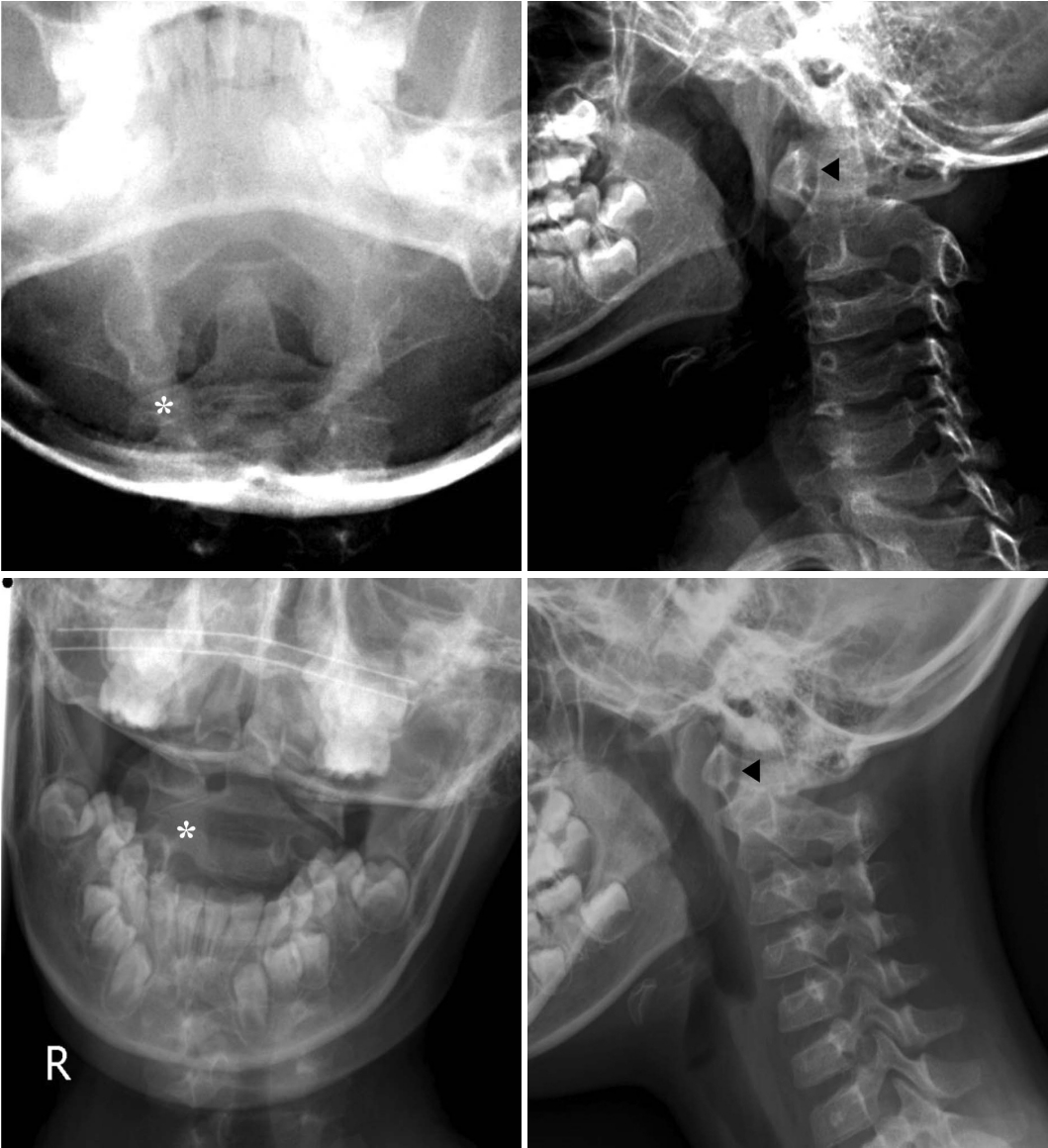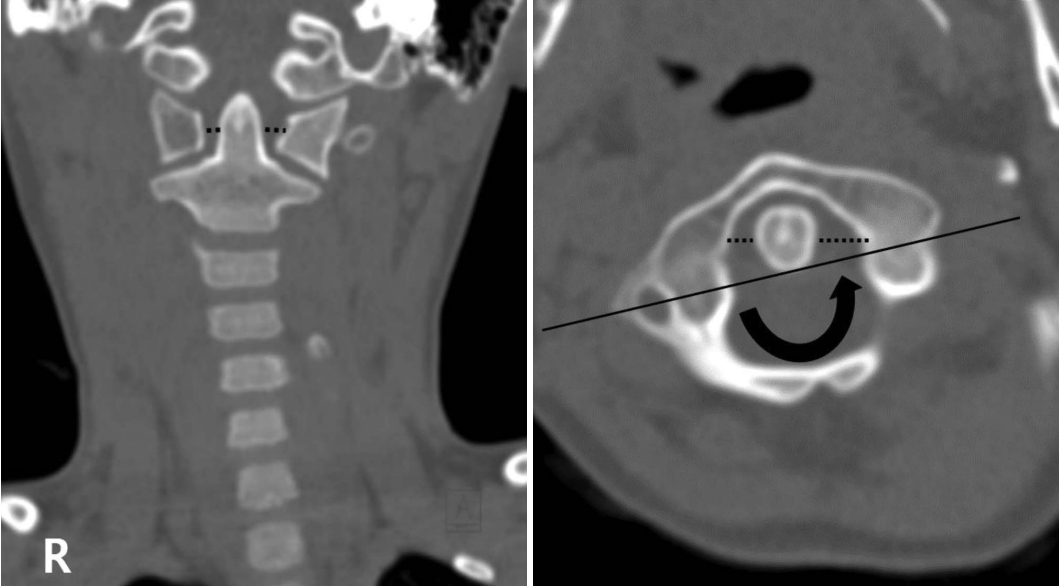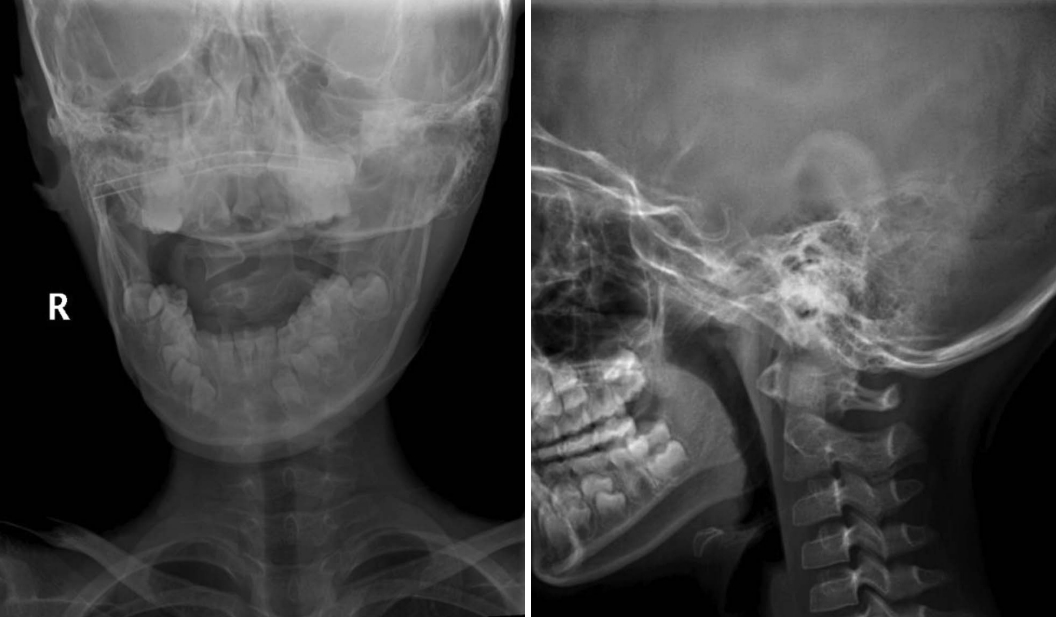1. Bocciolini C, Dall’Olio D, Cunsolo E, Cavazzuti PP, Laudadio P. Grisel’s syndrome: A rare complication following adenoidectomy. Acta Otorhinolaryngol Ital. 2005; 25(4):245–9.
2. Dagtekin A, Kara E, Vayisoglu Y, Koseoglu A, Avci E, Talas D, et al. The importance of early diagnosis and appropriate treatment in Grisel’s syndrome: Report of two cases. Turk Neurosurg. 2011; 21(4):680–4.
3. Sia KJ, Tang IP, Kong CK, Nasriah A. Grisel’s syndrome: A rare complication of tonsillectomy. J Laryngol Otol. 2012; 126(5):529–31.
4. Ahn AR, Park YH, Park EJ, Yim SY. A case of grisel syndrome showing no underlying laxity of the atlanto-axial joint. Ann Rehabil Med. 2017; 41(3):511–5.
5. Lee JK, Oh CH, Park HC, Yoon SH. Grisel’s syndrome induced by mycobacterium tuberculosis. Korean J Spine. 2015; 12(2):84–7.
6. Park SW, Cho KH, Shin YS, Kim SH, Ahn YH, Cho KG, et al. Successful reduction for a pediatric chronic atlantoaxial rotatory fixation (Grisel syndrome) with long-term halter traction: Case report. Spine (Phila Pa 1976). 2005; 30(15):E444–9.
7. Park SH, Park SH, Lee SH. Grisel syndrome: Pathophysiological evidence from magnetic resonance imaging findings. Ann Rehabil Med. 2013; 37(5):713–6.
8. Park HJ, Kwon KY, Kim WK, Shim YJ, Kwon SM. Non-traumatic atlanto-axial rotatory subluxation: A case report. J Korean Soc Spine Surg. 2012; 19(2):59–63.
9. Choi YS, Bae CH, Kim YD, Song SY. A case of atlanto-axial joint subluxation following tonsillectomy in patient of tonsillar cancer with preoperative radiotherapy: Grisel’s syndrome. Korean J Otorhinolaryngol-Head Neck Surg. 2016; 59(8):604–8.
10. Park JA, Yi HJ, Kang JW, Kim JH. Grisel’s syndrome developed after adenotonsillectomy. Br J Hosp Med (Lond). 2019; 80(9):ii.
11. Onerci M, Ogretmenoglu O, Ozcan OE. Atlantoaxial subluxation after tonsillectomy and adenoidectomy. Otolaryngol Head Neck Surg. 1997; 116(2):271–3.
12. Osiro S, Tiwari KJ, Matusz P, Gielecki J, Tubbs RS, Loukas M. Grisel’s syndrome: A comprehensive review with focus on pathogenesis, natural history, and current treatment options. Childs Nerv Syst. 2012; 28(6):821–5.
13. Battiata AP, Pazos G. Grisel’s syndrome: The two-hit hypothesis--a case report and literature review. Ear Nose Throat J. 2004; 83(8):553–5.
14. Henry LR, Gal TJ, Mair EA. Does increased electrocautery during adenoidectomy lead to neck pain? Otolaryngol Head Neck Surg. 2005; 133(4):556–61.
15. Fielding JW, Hawkins RJ, Hensinger RN, Francis WR. Atlantoaxial rotary deformities. Orthop Clin North Am. 1978; 9(4):955–67.





 PDF
PDF Citation
Citation Print
Print





 XML Download
XML Download